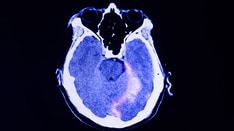Abstract and Introduction
Abstract
Concussions are a form of traumatic brain injury (TBI). Concussion is defined by the American Academy of Neurology as a "trauma-induced alteration in mental status that may or may not involve loss of consciousness" (Kirkwood, Yeates, & Wilson, 2012, p. 1360). At least 1.7 million TBIs occur annually, with 75% being in the form of concussion. Almost half a million patients ages 14 years and younger visit emergency rooms annually for TBI (Centers for Disease Control and Prevention [CDC], 2011). Diagnosing a concussion can be difficult because symptoms vary among individuals and may be subtle and vague, and neuro-radiologic imaging studies typically reveal no abnormalities. Due to the varying degree of symptomatology and recovery, there are no specific recommendations on when it is safe for patients to resume normal activity. Complications can arise if a second injury occurs prior to complete healing from the initial concussion. This literature review identifies current recommendations on the screening and management of concussion in the pediatric population. A clear, concise definition of concussion is presented, as well as recommendations for concussion management. Return to play and return to learn guidelines are explored. The nursing role in concussion management is discussed, and future implications are explored.
Introduction
Concussion is a form of traumatic brain injury (TBI), which impacts the pediatric population. Almost half a million patients ages 14 years and younger visit emergency rooms annually for this type of injury (Centers for Disease Control and Prevention [CDC], 2011). Children are thought to be at a higher risk for concussion injuries when compared to adults due to anatomical and structural differences, such as head shape and size, brain water content, vascularization, myelination, and weaker neck muscles (McGuire & McCambridge, 2011). Children ages 0 to 4 and 15 to 19 years had the highest incidence of annual TBI-related emergency department (ED) visits, hospitalizations, and death in the years 2002–2006, and males had higher rates of TBI-related ED visits than females (see Table 1 and Table 2) (Faul, Xu, Wald, & Coronado, 2010).
Although falls account for the largest number of TBIs (Faul et al., 2010), sports-related concussions are a great concern, with an estimated 3.8 million sports or recreation-related concussions occurring annually, accounting for 8.9% of high school injuries (Halstead, Walter, & The Council on Sports Medicine and Fitness, 2010). Football is the leading cause of concussion in high school athletes, followed by girls' soccer, boys' lacrosse, and boys' soccer, and although data are limited, rugby and ice hockey are also thought to account for high rates of concussion (Halstead et al., 2010). Although the incidence of concussion is higher among males, females playing similar sports to males have higher rates of concussion, which is hypothesized to be due to weaker neck muscles and smaller head mass (Halstead et al., 2010). Sports-related concussions are on the rise. In an 11-year period, concussion incidence increased from 0.12 per 1,000 athlete exposures in academic year 1997–1998 to 4.9 per 1,000 in academic year 2007–2008, which is a 4.2-fold increase or an average annual increase of 15.5% (Lincoln et al., 2011).
The diagnosis of concussion can be difficult to make because symptoms vary among individuals and may be subtle and vague, and neuroradiologic imaging studies typically reveal no abnormalities. Without proper evaluation and treatment, concussions can go undiagnosed and have potentially catastrophic results. Early diagnosis is imperative for proper concussion management. Health-care professionals need to understand the definition of concussion, mechanism of injury, and complications that can result. Current recommendations for screening and managing concussion injuries are required to prevent complications. Because recovery from concussion varies widely among patients, it is essential to screen patients for symptoms, and restrict both physical and cognitive activities while symptomatic. Gradual return to normal activities is recommended.
Pediatr Nurs. 2016;42(5):217-222. © 2016 Jannetti Publications, Inc.






